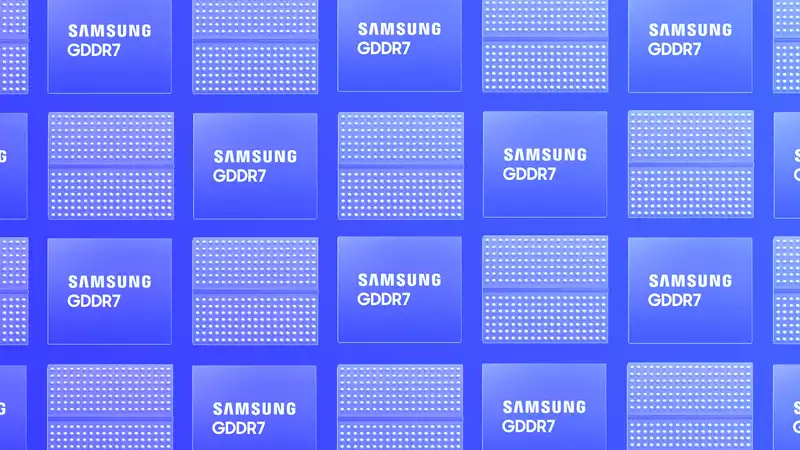Samsung is currently holding the flag in the race for the next generation of GDDR7 VRAM by developing the industry's first GDDR7 module. The development phase is complete and all that remains is to wait and see which of the top-tier memory manufacturers will be the first to bring their products to market.
Late last year, Samsung teased GDDR7 with promises of improved performance over current GDDR6 and GDDR6X. At the annual tech day, the prototype recorded speeds of 36 Gbps, while its predecessor was initially 14 Gbps. [Interestingly, Samsung's GDDR7 DRAM utilizes what is called PAM-3 (pulse amplitude modulation) signaling. This is a revised version that falls between the PAM-2 and PAM-4 technologies used in GDDR6 and GDDR6X, respectively, and converts data into a non-binary waveform. It was expected to play a significant role in improving performance, increasing the efficiency of GDDR7 by 25% and halving its speed at any given bandwidth
.
The final design did not hit the intended 36 Gbps mark, but a maximum boost speed of 32 Gbps per pin is nothing to sneeze at. Typically, memory chips evolve over time and become faster. This new chip has 1.4 times the bandwidth, 20% higher power efficiency, and 70% less thermal resistance.
Of course, one of the applications mentioned as expected is the potential for "expansion into future applications such as AI," but that does not mean that gamers will not benefit from such technology coming to market. Especially if the numbers are significantly higher than GDDR6 and GDDR6X, albeit slightly less than expected.
Samsung aims to bring its first GDDR7 product to market in late 2023, while their main competitor, Micron, is expected to introduce its next-generation G7 product in "early calendar year 2024." It remains to be seen if this small announcement will embolden Micron.


Comments